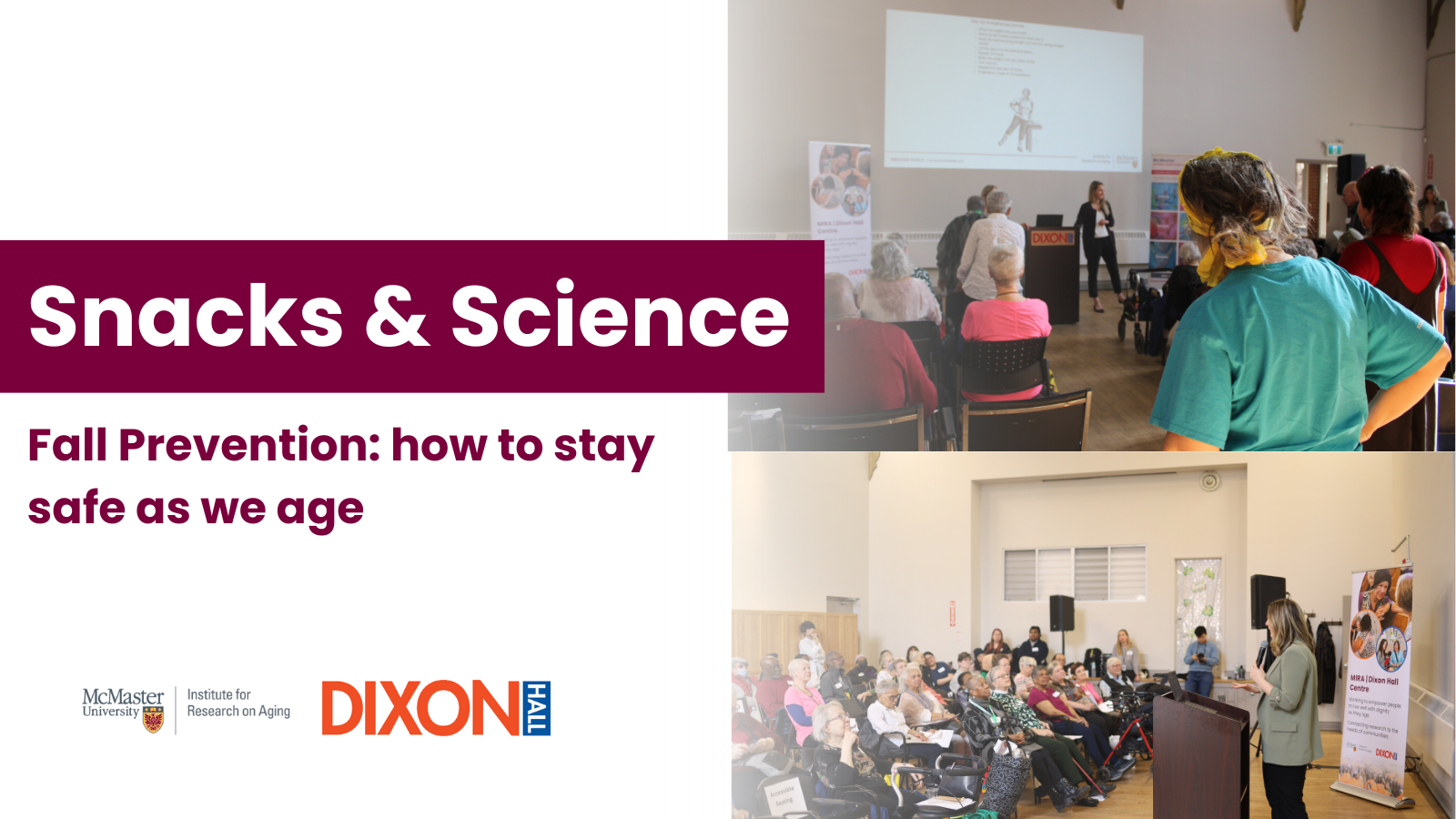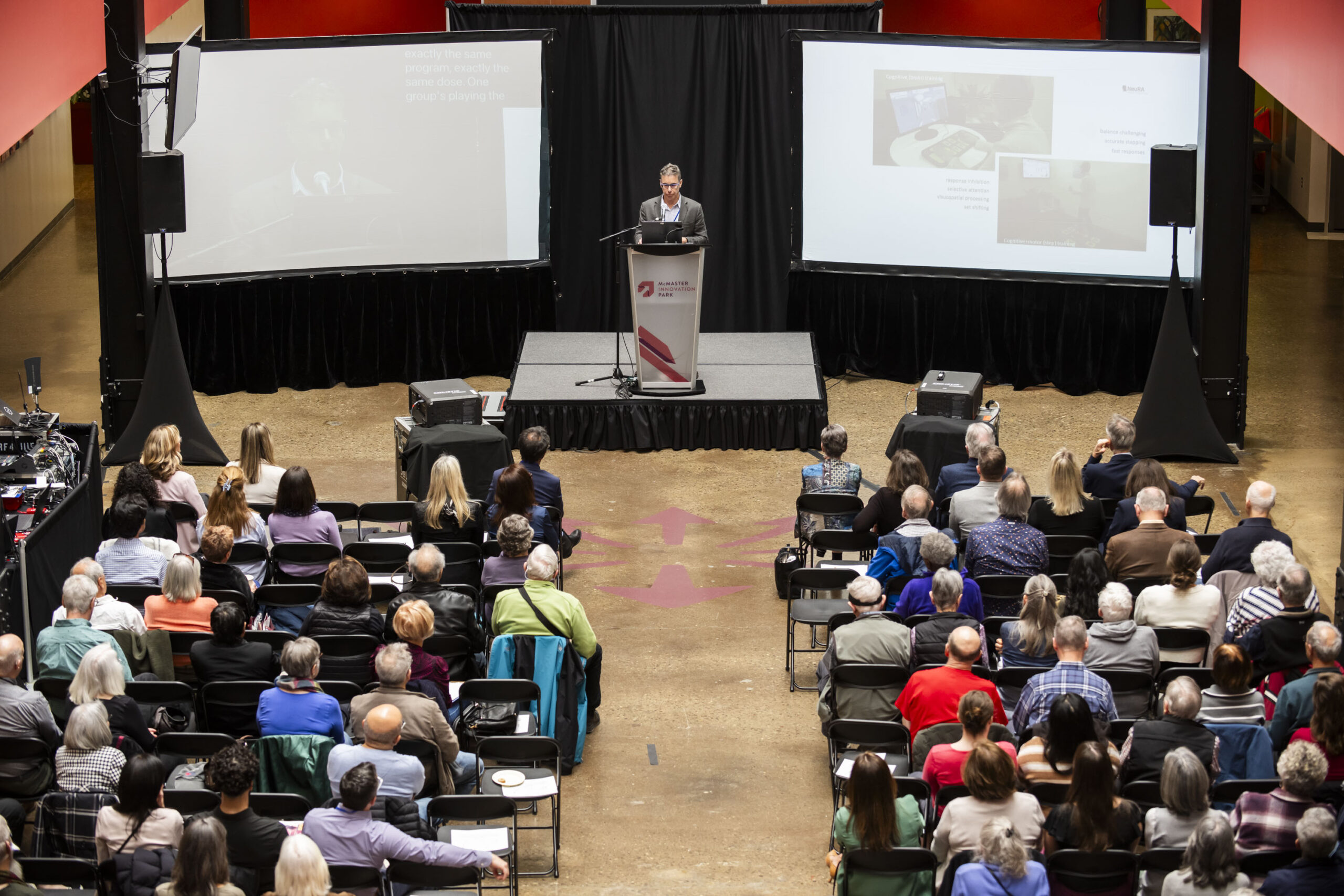Members of MIRA ​were featured in a Globe and Mail supplement focused on healthy aging. Distributed in print and online on November 21, 2016, the supplement features stories about outcomes arising from McMaster’s strength in aging research.
Published: November 9, 2016

Two men go to the hospital. Both are 75 and have previously enjoyed a similar level of well-being. Then both fractured a hip due to a fall. And although their injuries – as well as many of the medical history details captured on their hospital admission forms – are similar, what follows may be drastically different.
Patient A may leave the hospital and return to his home, family and community, resuming the same lifestyle he’s led before. Patient B, on the other hand, may move into a care facility, either temporarily or permanently, due to the lack of social and community support systems.
What causes such divergences in people’s paths? And how can Canadians improve their chances of being on the trajectory with the most positive outcomes?
Geriatric epidemiologist Parminder Raina says the Canadian Longitudinal Study on Aging – a 20-year project that follows more than 50,000 Canadians – will shed light on such questions.
“Some people age gracefully, living healthy productive lives until close to their deaths. Others face a lot of challenges that can lead to a poor quality of life. We are trying to understand the triggers that push people towards a healthy versus non-healthy trajectory,” says Dr. Raina, who is the study’s lead and the scientific director of the Institute for Research on Aging at McMaster University in Hamilton, Ont.

“Some people age gracefully, living healthy productive lives until close to their deaths. Others face a lot of challenges that can lead to a poor quality of life. We are trying to understand the triggers that push people towards a healthy versus non-healthy trajectory.”
Dr. Parminder Raina is scientific director of the McMaster Institute for Research on Aging
Among the many factors considered by Dr. Raina and his team are genetics, lifestyle and behaviour, and psychological, social, demographic and economic influences. “Some data suggests that genetics explain only one-quarter of what happens to people when they age,” he says. “We look at different variables and how they come together to make things better or worse.”
The answers are far from simple, and Dr. Raina stresses that “there is a lot of heterogeneity in the older population.” People over 75, for example, are likely to be affected by more than one chronic condition, he says.
“They are at the doctor’s office not because they have diabetes, heart disease or cancer – they have multiple conditions,” explains Dr. Raina. “This is often unknown territory, and we are researching how different disease combinations increase the risk of complications and predict mortality.”
Canada’s seniors and their families are eager to learn more about – and act on – research findings that may impact their quality of life, says John Lavis, director of the McMaster Health Forum and professor in clinical epidemiology and Canada Research Chair in Evidence-Informed Health Systems.
Many follow news and lifestyle programs and seek out health information online, says Dr. Lavis, who adds that it can be difficult to determine which reports and sources are supported by sound evidence.
“Canadians increasingly want to be in the driver’s seat for making decisions concerning their and their loved ones’ health,” he says. “We are trying to promote an understanding that not all available information is of equal value.”
This is the challenge that is addressed by the recently launched McMaster Optimal Aging Portal, explains Dr. Lavis. By bringing together research evidence about clinical, public health and health systems questions, and presenting the information in an easy-to-understand way, the portal provides a comprehensive go-to place for health-conscious Canadians over the age of 50.
Following the flood of health and well-being-related news items can be “like trying to drink from a fire hose,” says Dr. Lavis. “We’re working to reduce it to a trickle of water so you can fill your glass and actually drink it.”
In addition to providing information for the general public, the portal is also a resource for health-care practitioners and caregivers, as well as policy-makers, for whom the scientific evidence will be presented in line with their specific needs, he adds.
Dr. Raina explains that providing answers and access to actionable information for improving health and well-being goes beyond outcomes for the individual – it potentially has implications for our communities and society since older Canadians have much to give in wisdom and expertise, he says.
Seniors make valuable contributions through volunteerism and mentorship, for example, and Dr. Raina says understanding what causes disease and disability can inform the development of programs and interventions that promote healthy and independent living.
“During the next two decades, the number of seniors in Canada will double,” he says, adding that McMaster’s many research initiatives strive to provide evidence and tools to enable seniors to “live the fullest lives possible.”
|
Optimal Aging Portal |
|---|
|
Addressing key questions 1. What is actionable? Today’s news reports on research findings may contradict something that was presented two weeks ago, making it difficult to determine which stories are backed by high-quality research – and which can be acted on. The portal presents trustworthy actionable findings in understandable terms. 2. Are sources reliable? The Internet is full of free health resources, but it’s hard to know which are worth a closer look. How does a video clip from Dr. Oz compare to information from a charitable organization, for example? The portal rates the quality of free online health resources based on whether they are backed by sound evidence. 3. What’s the whole story? News releases about scientific findings often provide only partial answers. The portal’s blog posts put new evidence into accessible writing, adding background information to provide context for the reader. 4. Drama or substance? Media reports may play up the drama rather than focusing on substance. The portal will respond to the previous day’s news items that are related to aging, sending out tweets that connect the news coverage to the evidence. 5. Coming soon: What are the options? Making an informed decision means having access to all the options and weighing their pros and cons in light of one’s personal situation. This “decision aid” feature will allow Canadians to evaluate the different options when they are confronted with a diagnosis. |
This article originally appeared in a Globe and Mail sponsor content feature on Healthy Aging produced by Randall Anthony Communications Inc. Reprinted with permission. All rights reserved. The feature can be viewed here or downloaded here.

